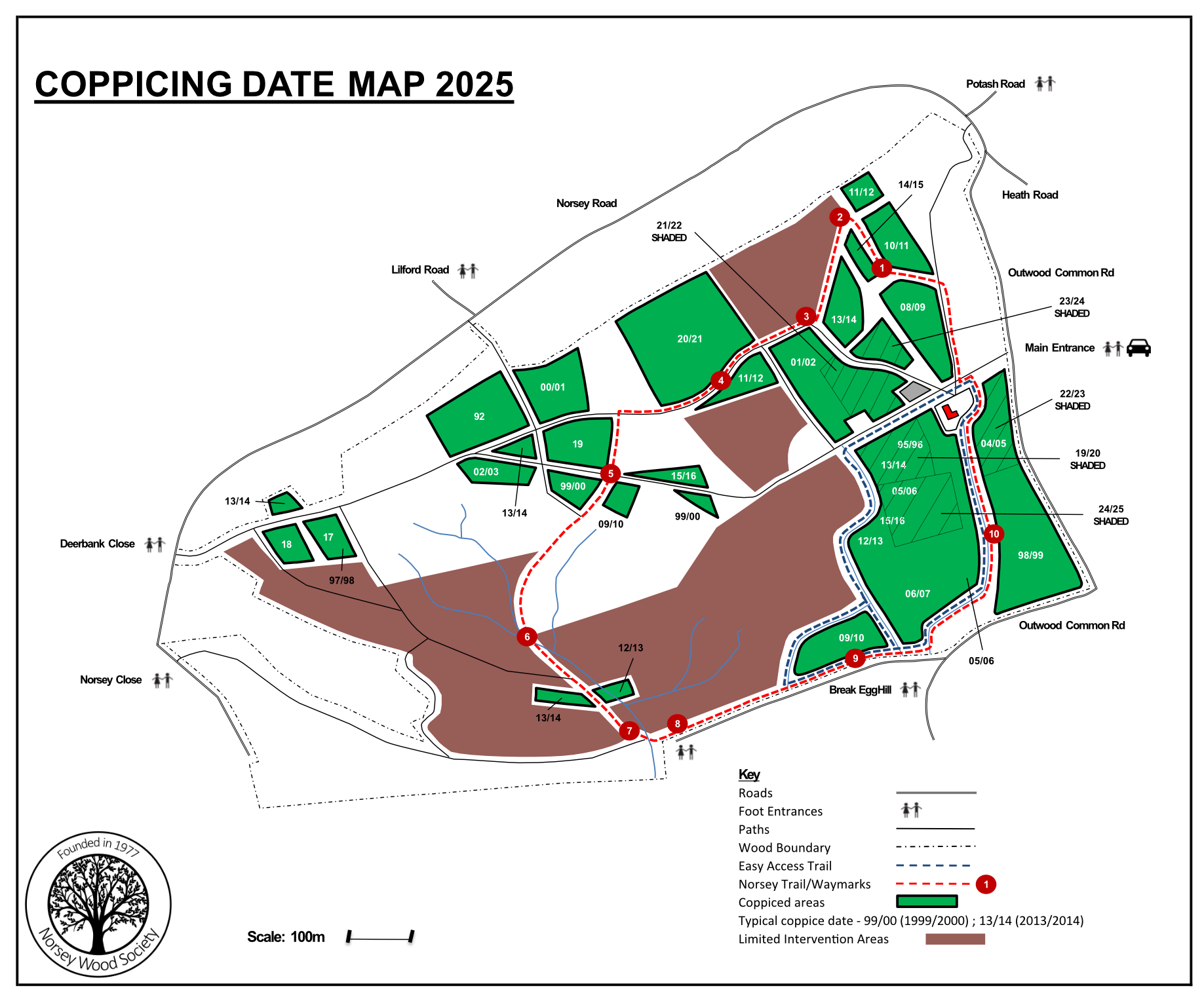The ‘fences’ you may notice bordering coppiced areas are called ‘dead hedges’. Dead hedging involves using the smaller material obtained from the coppicing operation. A double row of vertical stakes is driven in at roughly 1 metre intervals around the area and brashings (thin branches) are laid between the stakes to form the hedge.
They are built after coppicing has been completed, in order to protect the area from dogs and humans so that the soil and undergrowth can recover and, in particular, so that the seeds that will benefit from the increased light and warmth now that the canopy has been removed, can germinate in due course.







